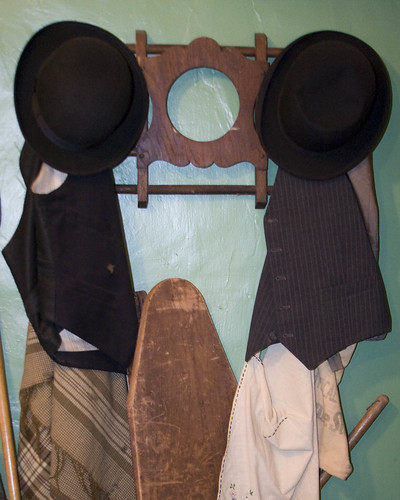Unfortunately it's impossible to learn about the individual histories of every one of the many 97 Orchard residents just by taking our building tours. Yet we understand that they each deserve recognition for the interesting and often extraordinary lives they have led.
Sam Gottesman is one of these lesser known tenement residents but an important friend to the Tenement Museum.
Sam was born on the fourth of July, 1901, in New York City. His father, David Gottesman, who worked as a machinist, and mother, Tobia Herman Gottesman, had immigrated from Romania. Sam was the first American-born member of the family. Together, they lived in one of 97 Orchard's third floor apartments for the first years of Sam's life.
Here he is as an infant sometime during late 1901 or early 1902:
 |
| Collection of the Lower East Side Tenement Museum © 2010 |
Sam left the family's Lower East Side home along with his parents when they decided to return to Romania; it is unclear why they chose to leave the United States.
His parents stayed in the old country, but Sam returned to New York in 1924 and quickly found work as a bookkeeper. More of a frequent traveler than other early residents of the LES, Sam visited his family in Romania just two years later for "temporary residence," as specified in his 1926 passport, before returning once again to New York City.
Here, you can see a 24 year old Sam in his passport photo:
 |
| Collection of the Lower East Side Tenement Museum © 2010 |
Some 66 years later, in October of 1990, Sam, now "Seymore" as he preferred to be called later in life, contacted the Tenement Museum after reading about our search for 97 Orchard Street alumni in
The Jewish Week.
In February of 1991, he commuted from his home in the Bronx to visit the Museum and generously recorded his childhood memories to tape. Some of his fondest were of "the verbal newspaper," the tenement's rooftop.
"Oh, the roof..." he said, "that was the promised land. When you went there you had the sun. And neighbors used to get together and schmooze over politics, and settle arguments, and gossip of course... You had to know what the neighbors were doing... what she cooked in the afternoon... whether he had a quarrel with his wife or not, and whether they made up... whether Hattie went out with Jimmy, and stuff like that. You had to know those things."
He told us the roof served a more practical purpose, too, as his parents needed to know if "someone had picked up a bargain or if there was a sale." During hard times, he said, "that was also a part of life."
Mr. Gottesman returned to the Tenement Museum in March of '91 to be interviewed for a Seattle radio program focused on Lower East Side immigrants, and in April he visited again for an interview with the Christian Science Monitor. Gracious as always, he took the museum's oral historian and researcher, Amy Berkson, out to lunch during each visit.
Sadly one year later Mr. Gottesman passed away at the age of 90, leaving behind a son, Tobias, living in Maryland.
Mr. Gottesman was a great asset to the Tenement Museum's early days and an interesting figure, balancing two cultures and their influences more literally than most immigrants who settled in New York City. From Romania to New York to Romania and back again, his story that sheds new light on what it means to be an immigrant in America.
-Posted by Joe Klarl
















